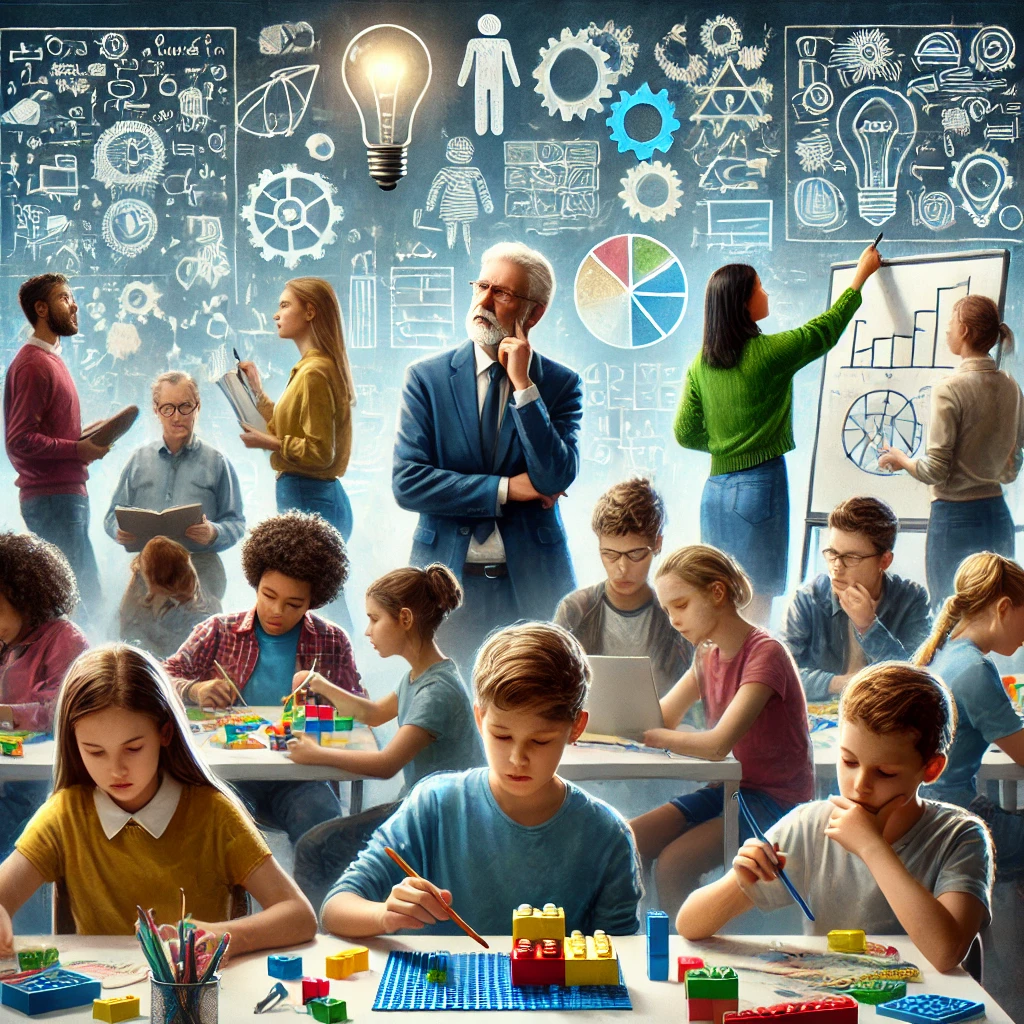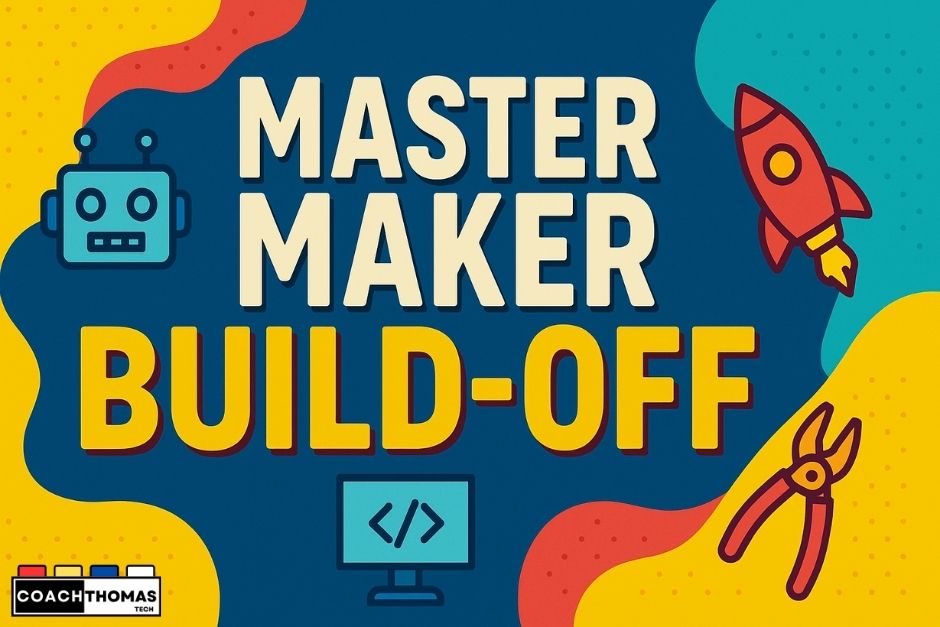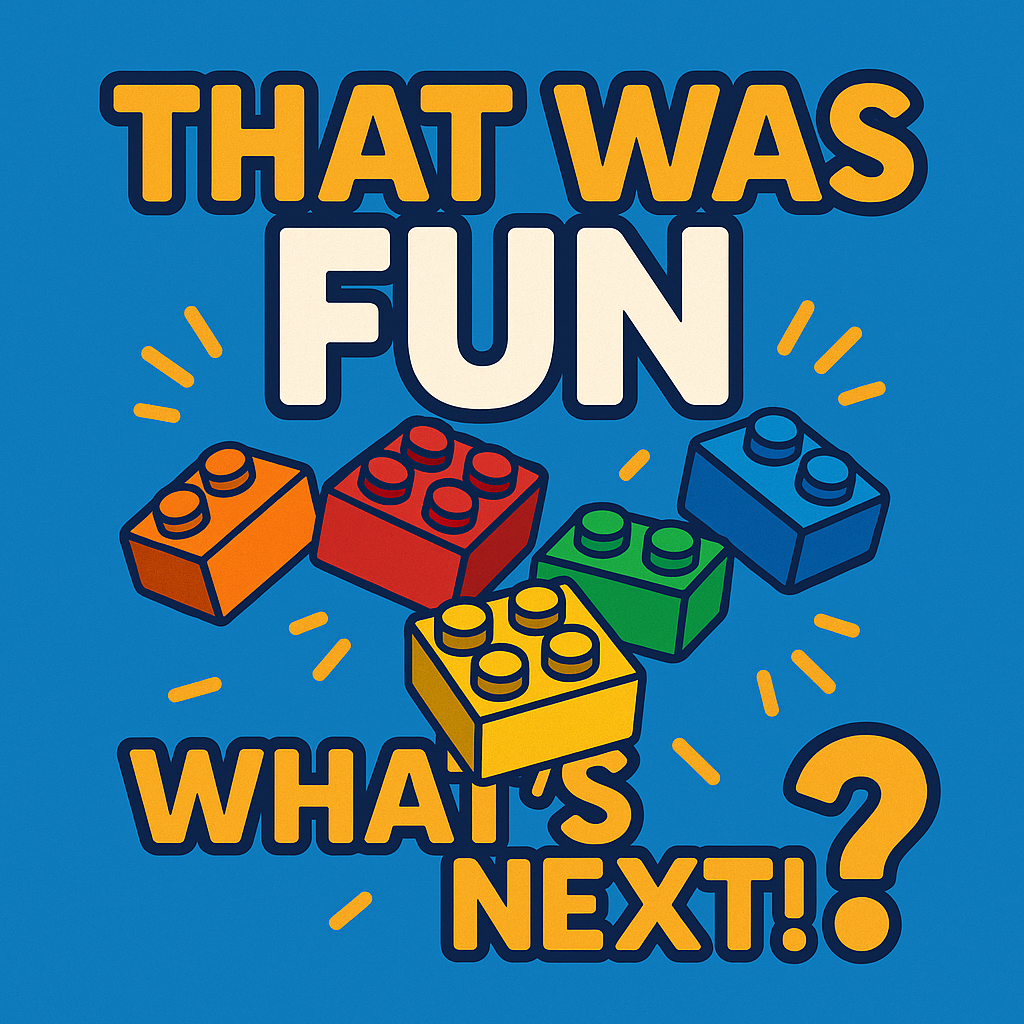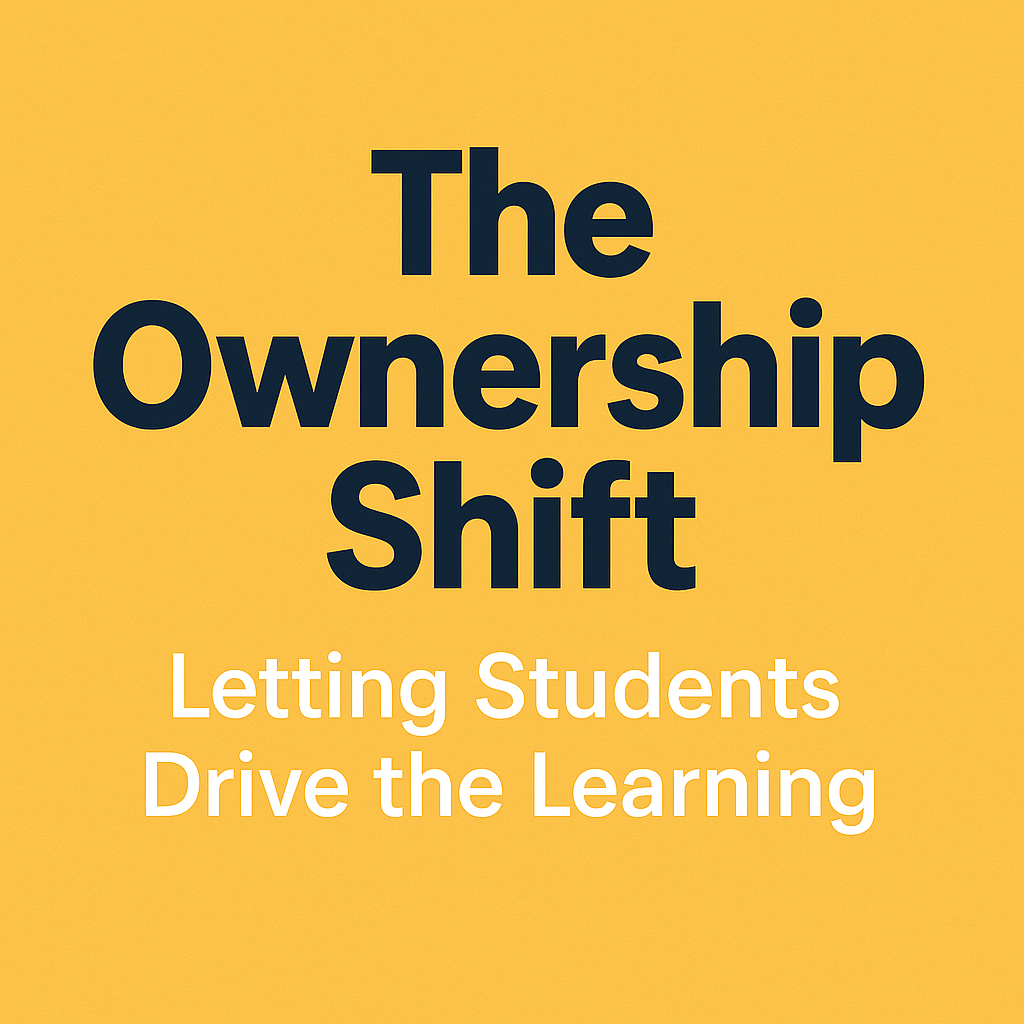Just last week, I had a student reduce themselves to tears in the classroom. Now, that is usually not a good situation or scenario. But in this case, it was a learning moment.
We were working on a mousetrap car project. The challenge was to make the car move the farthest distance with the materials provided. Things were going great. Students were building their vehicles. Rolling them across the floor straight and true (which is a huge accomplishment sometimes). Next came the real challenge: how to make it move with the mousetrap. I was not explicitly telling them how.
This is when one student, who is academically strong, reached a breaking point. She kept asking how to do it. I would respond to her with questions, trying to get her to think through the problem. This frustrated her and she was reduced to tears. Frustration began to set in.
Her frustration wasn’t just about the project, it was about something bigger. She wasn’t used to struggling like this because she had always been great at playing the game of school. She knew how to memorize, recall, and ace tests. But when faced with a challenge that required problem-solving rather than rote recall, she didn’t know where to start.
Why? Because education prioritizes memorization over real problem solving. Schools are evaluated on standardized tests, not application of knowledge.
So, my question to you is, what if we spent more time teaching kids how to think and less time drilling facts?
The Problem: Memorization Over Thinking
Think about this, our schools today reward memorization over critical thinking.
Don’t believe me, two words: standardized tests.
This is what schools are measured on. So, is it a surprise then that teachers and students play the game of school? We drill and kill the students so that they can regurgitate it on the test. Viola!! Awesome test scores. Great schools. But no actual learning takes place
This memorization gets the students what to think, not how to think. It is very surface level. Because without application, “knowledge” is shallow and easily forgotten. That’s why students cannot retain knowledge year after year. My contention is that real learning takes place when we use it.
The real damage is that this practice leads to fear of failure and the chase of the one right answer. Students are trained to follow a recipe, get the answer and move on. That is not how the real world works. Memorization will come through using the information in new and innovative ways.
The Consequences of This Approach:
🚫 Students recall facts but struggle with application
🚫 Disengagement grows due to rote memorization
🚫 Lack of real-world relevance makes learning feel meaningless
🚫 Weak problem-solving and critical thinking skills
If we want to prepare our students for life outside the classroom, we need to shift from knowing to using. Our world needs thinkers, doers and problem-solvers.
The Shift: Teaching Thinking Over Memorization
The workplace and life outside the classroom are changing faster than ever. Information is everywhere, but knowing how to use it effectively is what truly matters. Employers don’t just want people who can recall facts—they need problem-solvers and critical thinkers who can adapt, analyze, and create.
Education must evolve to meet these demands by focusing on thinking-based learning.
The Key Elements of Thinking-Based Learning
1. Critical Thinking – Evaluating, Analyzing, and Making Informed Decisions
Critical thinking is the ability to assess information, consider multiple perspectives, and form reasoned conclusions based on evidence. Students must learn to ask:
✅ Is this information reliable?
✅ What evidence supports this claim?
✅ How does this connect to what I already know?
🔹 Education Example: Instead of memorizing historical dates, students analyze why an event happened and how different perspectives shaped the outcome.
🔹 Real-World Application: Critical thinkers can evaluate sources, detect bias, and make informed decisions, preventing them from being misled by misinformation.
2. Problem-Solving – Applying Knowledge in New and Unfamiliar Situations
Problem-solving isn’t about memorizing steps—it’s about figuring things out when there’s no obvious solution. Strong problem solvers:
✔ Identify challenges
✔ Brainstorm possible solutions
✔ Test and refine their ideas
✔ Adapt, experiment, and persist through failure
🔹 Education Example: Instead of just learning Newton’s Laws of Motion, students design and build a mousetrap car to apply physics concepts in action.
🔹 Real-World Application: Problem-solving is crucial in troubleshooting machine malfunctions, debugging software, or managing projects with limited resources.
3. Creativity & Inquiry – Asking “Why?” and “How?” Instead of Just “What?”
Creativity fuels innovation, curiosity, and the ability to explore multiple solutions to a problem. Students should be encouraged to:
✅ Generate new ideas
✅ Experiment with different possibilities
✅ Explore multiple approaches to a challenge
🔹 Education Example: Instead of following step-by-step science lab instructions, students design their own experiments to test a hypothesis.
🔹 Real-World Application: Creativity is essential in fields like engineering, business, and technology, where new and unique solutions drive progress.
The Bottom Line
Memorization happens naturally when students engage in deep thinking, problem-solving, and creativity. We often hear the phrase, “Knowledge is power” but knowledge is only powerful if you know how to use it.
How to Teach Thinking in the Classroom
There are many ways to teach thinking in the classroom. Below are a few effective strategies that promote critical thinking, creativity, collaboration, and communication.
1. Project-Based Learning (PBL)
PBL is a method where students learn by actively working on real-world, meaningful projects that require them to apply their knowledge instead of just recalling information. These challenges are open-ended, with multiple correct answers, mirroring how real-world problem-solving works.
Why It Works:
✔ Encourages problem-solving, collaboration, and creativity.
✔ Helps students make connections between different subjects and real-life situations.
✔ Shifts learning from passive absorption to active engagement—students take ownership of their learning.
Example in Education:
🔹 Instead of memorizing Newton’s Laws of Motion, have students design and build a working mousetrap car to test physics concepts.
🔹 In history class, rather than just memorizing dates and facts, have students create a documentary or act as historical advisors to solve a problem from that era.
Real-World Connection:
🔹 PBL mirrors how the workforce operates—projects, iterations, and real-world problem-solving.
🔹 Engineers, scientists, and business leaders don’t take multiple-choice tests—they solve problems.
2. Play-Based & Hands-On Learning
This method allows students to explore concepts by building, testing, and iterating ideas—essentially, learning through play. By experimenting with ideas, students develop problem-solving skills naturally rather than just memorizing answers.
Why It Works:
✔ Encourages trial and error, iteration, and resilience.
✔ Learning becomes active instead of passive.
✔ Taps into intrinsic motivation—students engage more when learning is fun.
Example in Education:
🔹 Instead of lecturing about bridges and structural engineering, give students random materials (LEGO, craft sticks, paper) and challenge them to build a bridge that can hold weight.
🔹 In a biology class, rather than memorizing ecosystems, have students create a working model of an environment and adjust variables to see how changes impact the system.
Real-World Connection:
🔹 Innovators like Elon Musk, Steve Jobs, and leading architects/designers developed ideas by experimenting, prototyping, and failing forward.
🔹 The most creative and successful minds didn’t just memorize—they built, tested, and adapted.
3. Inquiry-Based Learning
Inquiry-based learning shifts from teacher-led instruction to student-driven discovery. Instead of simply delivering answers, educators guide students through questioning and exploration.
Why It Works:
✔ Promotes curiosity, engagement, and deeper understanding.
✔ Helps students develop independent learning skills—they learn how to find answers instead of waiting for them.
✔ Transforms learning from rote memorization into meaningful exploration.
Example in Education:
🔹 Instead of explaining the scientific method upfront, present an experiment with unexpected results and ask students:
- What do you notice?
- Why do you think this happened?
- How could we test this idea further?
🔹 In an English class, instead of giving a set interpretation of a novel, have students debate multiple perspectives and support their reasoning with evidence.
Real-World Connection:
🔹 Scientists, journalists, and business leaders ask the right questions to drive change and innovation.
🔹 Google, Apple, and other top companies value employees who challenge assumptions and think beyond the obvious.
4. Rethinking Assessment
Traditional assessments focus on memorization and recall, but true learning is demonstrated through application. Performance-based assessments allow students to show what they know throughout the learning process, focusing on process over product.
Why It Works:
✔ Encourages critical thinking and creativity instead of just rote recall.
✔ Helps students develop real-world skills—public speaking, collaboration, analytical thinking, and adaptability.
✔ Makes learning more engaging and meaningful.
Example in Education:
🔹 Instead of giving a multiple-choice test on the water cycle, have students design a model ecosystem that demonstrates it in action.
🔹 In history, rather than testing dates and names, students can write and perform historical reenactments that explore different viewpoints.
Real-World Connection:
🔹 Employers don’t give multiple-choice tests—they assess problem-solving, adaptability, and communication skills.
🔹 Colleges and careers increasingly value portfolios, projects, and real-world applications over standardized test scores.
Bringing It All Together: Action Steps for Educators
🔹 Start small – Introduce one PBL activity, encourage one inquiry-based discussion, or shift one test to a performance-based assessment.
🔹 Encourage reflection – Have students explain how they arrived at an answer, not just what the answer is.
🔹 Celebrate failure – Teach students that iteration is part of learning and that making mistakes is how we grow.
🔹 Make connections – Help students see how learning applies to their lives and the world beyond the classroom.
Overcoming Challenges
Transitioning from memorization-based learning to thinking-based learning isn’t always easy. Teachers face systemic barriers, student mindsets, and outside expectations that can make this shift feel overwhelming.
Below are some common concerns and practical solutions to help ease the transition.
Challenge: “But My Students Need to Know Facts and Memorize Them.”
Yes! Students absolutely need to know facts, and standardized tests reinforce this expectation. This makes it difficult for teachers to move away from memorization.
Solution: Balance Facts and Memorization with Application
Create opportunities where memorization and application happen together—retention improves when students actively use the material. Students still learn facts but through hands-on exploration, discussion, and problem-solving.
Teach students how to retrieve and use information meaningfully. In today’s world, facts are just a click away, but knowing how to evaluate and apply them is what really matters.
Challenge: “My Students Struggle Without Step-by-Step Instructions.”
Students are conditioned to follow directions, not think critically. They get frustrated when there’s no single “right” answer. Open-ended challenges can feel uncomfortable at first.
Solution: Teach Resilience and Perseverance Through Small Steps
Start small—you don’t need to overhaul everything. One small tweak to an assignment can turn a boring worksheet into an engaging challenge.
Create low-stakes mini-lessons with some structure but without giving all the answers—this builds student confidence.
Guide students through thinking instead of answering for them—help them ask the right questions rather than waiting for the “right” answer.
Challenge: “I Don’t Have Time to Change My Entire Teaching Approach.”
Teachers already juggle a million responsibilities. Adding “thinking-based learning” feels like one more thing in an already packed schedule.
Solution: Start Small and Integrate Gradually
You don’t need to start from scratch! Keep what works and tweak small parts of your lessons.
Try one of these quick changes:
- Turn a worksheet into a challenge – instead of rote practice, ask students to apply the skill in a real-world context.
- Use a five-minute thinking break – pose a quick challenge that requires students to analyze or problem-solve something in your curriculum.
- Shift questions from recall to reasoning – Instead of “What is the answer?” ask “Why does this happen?”
Challenge: “My Students Just Want to Know the Right Answer.”
Students have been trained to believe that success means finding the answer as quickly as possible. They struggle when faced with open-ended problems or tasks that require deeper thinking.
Solution: Redefine Success in the Classroom
Focus on the process, not just the outcome—learning happens in the struggle, iteration, and problem-solving.
Praise effort, curiosity, and persistence—not just correct answers.
Celebrate failure as part of learning—when students see mistakes as data, not defeat, they gain confidence.
Model thinking out loud—walk students through your own problem-solving process to show how experts think through challenges.
Challenge: “Parents and Administrators Expect Traditional Teaching.”
Parents and administrators often equate “good teaching” with direct instruction and high test scores because that’s how they were taught.
Solution: Communicate the Why and Show the Evidence
Be transparent—explain that critical thinking, creativity, and persistence are essential for success in college, careers, and life.
Showcase student growth through:
- Portfolios, projects, and presentations – Instead of just grades, let students demonstrate their learning in multiple ways.
- Real-world connections – Highlight how students use thinking skills in ways beyond memorization.
Gather feedback—check in with students, parents, and administrators to document progress and adjust where needed.
Final Thought: Progress Over Perfection
This isn’t about eliminating content knowledge—it’s about making learning more meaningful by teaching students how to think, not just what to remember.
Start small, celebrate progress, and remember— the best thinkers, innovators, and problem-solvers weren’t born that way. They built, tested, and refined their skills over time.
The same is true for our students.
Let’s teach them to think, explore, and create—not just memorize.
Call to Action & Summary
Memorization has its place, but true learning happens when students think, explore, and apply their knowledge. Shifting from rote recall to thinking-based learning doesn’t require a complete overhaul—just small, intentional changes.
Start with one tweak: ask “why” instead of “what,” turn a worksheet into a challenge, or let students struggle through a problem without giving them the answer.
Real learning isn’t about memorizing facts for a test—it’s about building the confidence to solve problems, think critically, and create.
Let’s teach students to think, not just remember. Ready to start? Pick one strategy and try it this week!
Disclaimer This content was originally written by the author. AI was used solely for editing, formatting, and refining the structure to enhance clarity, readability, and flow. No AI-generated content was used in the creation of ideas or original writing.



